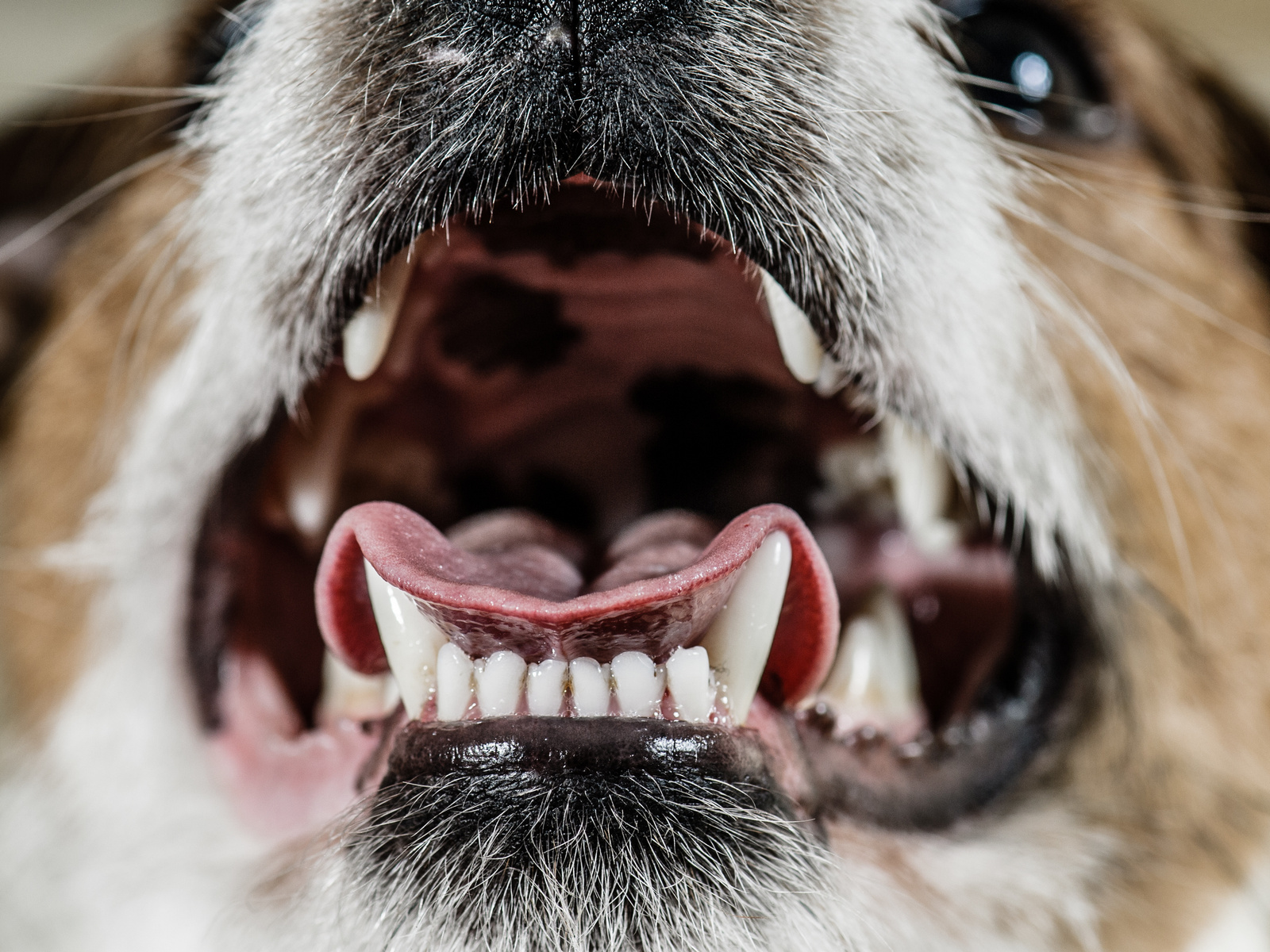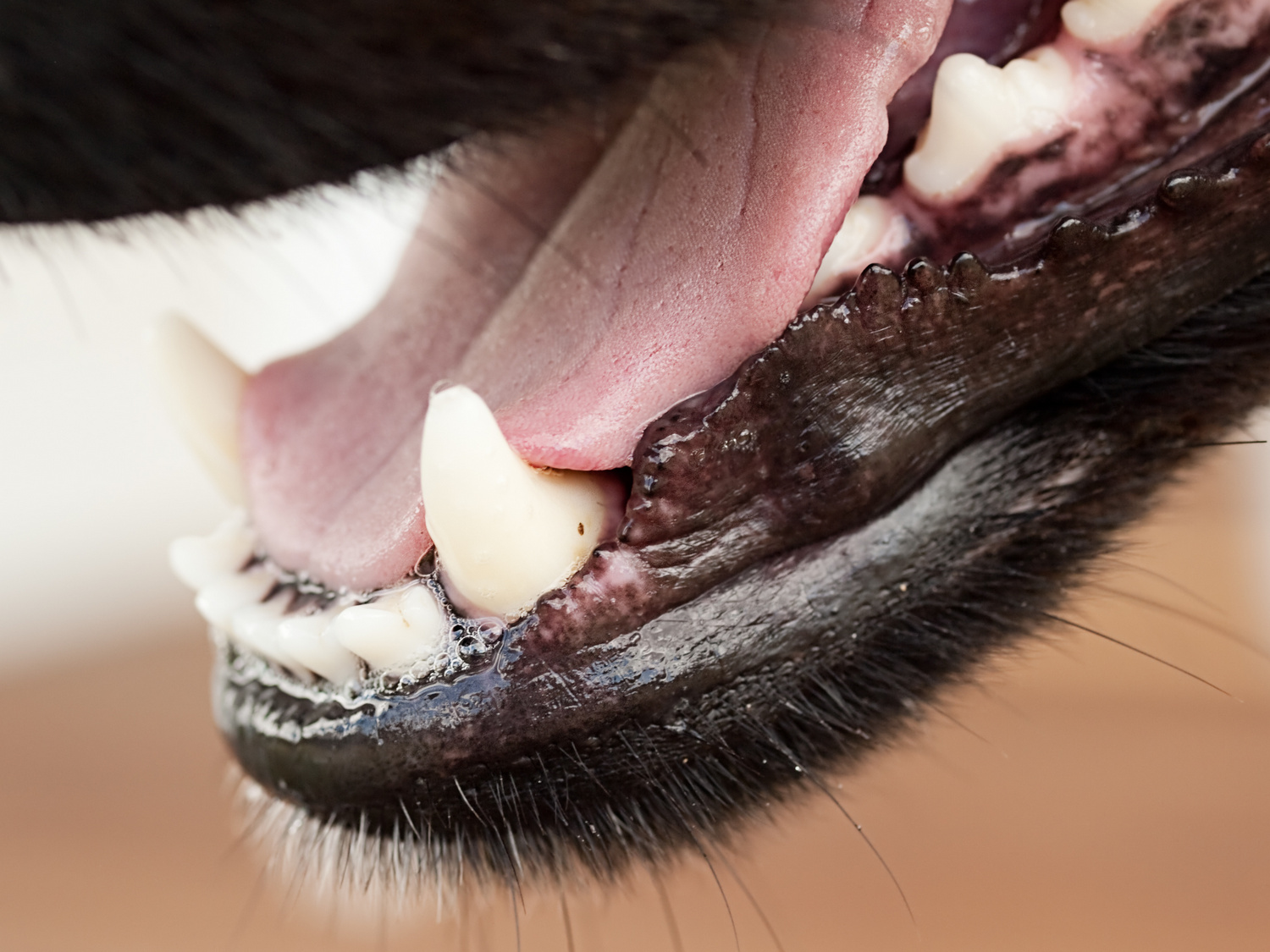
What colour should dogs' gums be?
The colour of your dog’s gums says a lot about their health, and any changes could be a sign that something is wrong. The colour of healthy dog gums varies from dog to dog, but they should generally be a bubble-gum pink or salmon colour.
Some dogs have naturally mottled gums, which isn’t something to worry about. However, if your dog’s gum colour has changed, this could be a sign of something more serious.
Our ‘dog gum colour chart‘ below can give you an indication of what could have possibly led to a change in your dog’s gums. However, remember that only a vet’s examination can determine the real cause, and your dog might need urgent treatment.
So, always err on the side of caution and contact your vet immediately if you have any concerns about your dog’s gum colour.
Why are my dog's gums pale?
Pale gums in dogs can be a sign of several different serious health conditions. Anything that causes pale gums in dogs should be considered an emergency and you should contact your vet, or out of hours your nearest Vets Now straight away.

You might also be interested in:
What causes pale dog gums?
Many conditions in dogs include pale gums as a symptom. These include anaemia, blood loss, shock, and kidney disease.
Anaemia
Anaemia occurs when there’s a fall in the number of red blood cells which transport oxygen around the body. In severe cases, this can lead to oxygen deprivation. Pale pink or white gums are the most obvious and common clinical sign of anaemia, with other signs including weakness, lethargy, poor appetite and shortness of breath. If left untreated, anaemia can be fatal.
Blood loss
Blood loss can be due to a wide range of causes, including trauma and a severe parasite infestation caused by fleas and ticks. Blood loss could be life-threatening and should always be considered an emergency, so contact a vet immediately if your dog is suffering from blood loss.
Shock
Shock refers to a life-threatening condition due to a sudden drop in blood flow through the body. Lack of blood flow means cells and organs don’t get enough oxygen and nutrients to function properly. Several different issues can cause shock and is often seen with trauma such as car accidents. If left untreated, shock can be fatal, so immediate veterinary treatment should be sought.
Kidney disease
The kidneys play a vital role in the body’s functioning; any condition that hinders the kidney’s function is known as kidney or renal disease. Many causes of kidney disease exist, including chemicals, toxic foods, and infections. One of the many functions of the kidney is the production of a hormone called erythropoeitin, which instructs the bone marrow to make red blood cells.
When the kidney is not working properly, its ability to produce erythropoeitin is compromised and the number of red blood cells in the body drops. Although symptoms can vary depending on the cause and severity of the kidney disease, pale gums (caused by anaemia) is one of several possible symptoms.
What should I do about pale gums in dogs?
Any causes of pale gums in dogs could be potentially life threatening or require urgent treatment, so it’s vital that you contact a vet for advice.
How do I check for unhealthy dog gums?
- If it is safe to do so, lift the upper lip to observe the colour of the gums just above the upper canine teeth
- Press firmly on your dog’s gums with your finger and then release to test how long it takes for the gum to return to its normal colour (this should happen within 1 – 2 seconds)
- If you are unable to check their gums, examine the eyes instead by gently pulling the eyelid down and looking at the colour of the tissue.
If you notice any abnormalities, contact your vet or your nearest Vets Now as soon as possible.

Dog gum colour chart
Use our ‘dog gum colour chart’ to get an idea of what might be causing pale gums or any other change in your dog’s gum colour. Remember that many of the causes are considered emergencies and your dog should receive treatment from a vet as quickly as possible.
| Gum colour | Possible reasons |
|---|---|
| Pale |
|
| Yellow |
|
| Blue or purple |
|
| Cherry red |
|
Can I prevent pale gums in dogs?
Given the range of underlying causes which could have led to a change in your dog’s gum colour, the methods of prevention vary, and in some cases, there’s no way to prevent it.
The best method is to take general steps to ensure your dog’s environment is as safe as possible – keep toxic substances out of their reach, keep them away from sharp objects which could cause bleeding and avoid situations where they could get hurt.
Carrying out routine checks of your dog’s gums will also identify any issues quickly.

